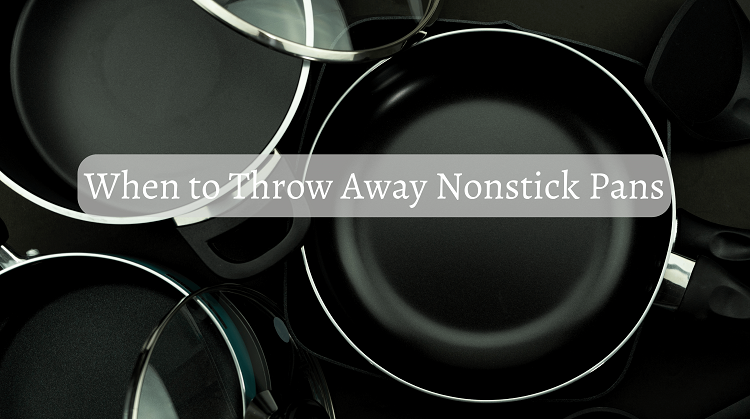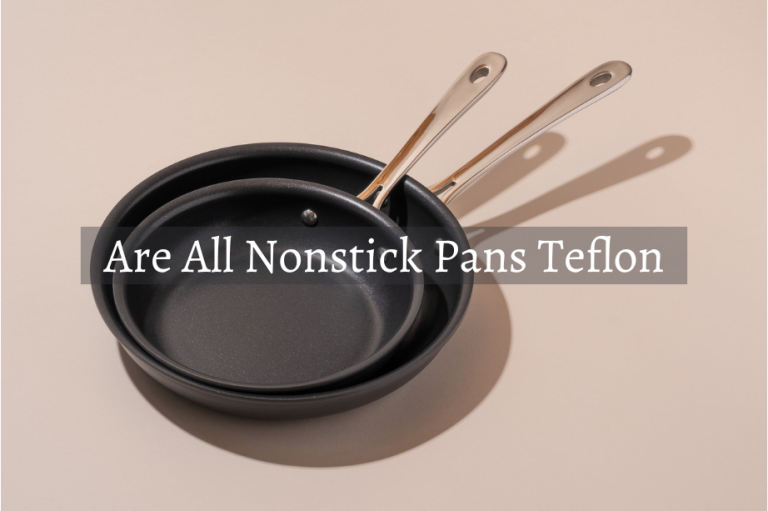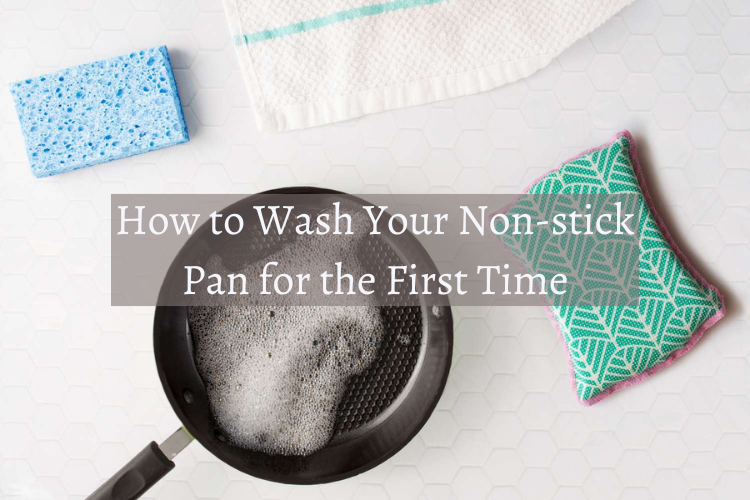How to Tell If your Pan is Nonstick | Easy Ways
Ever wondered if your pan is nonstick? It’s a question many home cooks have. Knowing whether your pan has a nonstick coating can make your cooking and cleaning much easier.
Let’s explore how to tell if your pan is nonstick with simple, easy-to-follow steps.
How to Tell If Your Pan is Nonstick?
Here are some easy methods to figure out if your pan is nonstick.
1. Look for Labels or Marks
Start by checking if there are any labels or marks on your pan.
Most nonstick pans have some sort of label from the manufacturer. This could be on the handle or the bottom of the pan.
Look for words like Teflon or ceramic. If you see these names, your pan is likely nonstick.
2. Do the Water Test
Another simple way to check is the water test.
Heat the pan on medium heat for a few minutes. Then, drop a few drops of water onto the pan.
In a nonstick pan, the water should bead up and roll around. If the water sizzles and disappears quickly, the pan might not be nonstick.
3. Check the Surface Texture
Take a close look at the surface of your pan.
Nonstick pans usually have a smooth, slick surface. If the surface feels rough or has scratches, the pan might not be nonstick.
A smooth surface is a good sign that the pan has a nonstick coating.
4. Observe How Your Food Cooks
Think about how your food performs in the pan.
Nonstick pans are designed to make cooking easier and to prevent sticking. If your food sticks to the pan or requires extra oil, it might not be nonstick.
If your food slides off easily and cleaning is a breeze, it’s probably nonstick.
5. Look for Wear and Tear
Nonstick coatings can wear out over time. Look for scratches, chips, or discoloration.
If you see these signs, the nonstick coating might be damaged or worn out. This can affect not just the performance of your pan but also how you use it.
For instance, if the coating is compromised, you might wonder if you can still use butter or other ingredients safely. To learn more about this, check out our guide on Can You Use Butter on Nonstick Pan?.
6. Use a Small Amount of Oil
Try adding a tiny amount of oil to the pan.
In a nonstick pan, the oil should spread out evenly. If the oil pools in one spot or smokes a lot, the pan might not be nonstick.
7. Consider the Age of Your Pan
Think about how long you’ve had the pan.
Older pans might lose their nonstick properties over time. If your pan is old and doesn’t work as well as it used to, the nonstick coating might be worn out.
8. Try a Magnet Test
Some nonstick pans are made with materials that magnets stick to.
You can use a magnet to check the bottom of the pan. If the magnet sticks, the pan might be nonstick. If it doesn’t stick, the pan might not have a nonstick coating.
9. Check the Manufacturer’s Info
Look at the manufacturer’s information for your pan.
Most brands provide details about their cookware. You can usually find this information on their website or in the product manual.
10. Recognize Common Nonstick Brands
It helps to know some common nonstick cookware brands.
Brands like Tefal, Calphalon, and GreenPan are known for their nonstick pans. If your pan is from one of these brands, it’s likely nonstick.
Comparison Table
Here’s a simple comparison of different types of nonstick pans:
| Feature | Aluminum | Stainless Steel | Ceramic | Cast Iron |
|---|---|---|---|---|
| Material | Lightweight | Durable | Even Heat | Very Durable |
| Coating Type | Teflon | PTFE | Ceramic | Enamel |
| Heat Distribution | Even | Even | Very Even | Less Even |
| Durability | Moderate | High | High | Very High |
Recommendations
When choosing a nonstick pan, here are some tips:
- Choose Quality Brands: Go for brands like Tefal, Calphalon, or GreenPan.
- Check the Coating: Look for advanced coatings like ceramic for better performance.
- Consider the Material: Aluminum is lightweight, while stainless steel is durable.
- Read Reviews: See what other users say about the pan’s performance and longevity.
Summary
Figuring out if your pan is nonstick can be easy with the right methods. Check for labels, perform simple tests, and observe the surface.
Knowing if your pan is nonstick can help you cook better and make cleaning up easier. With these tips, you’ll be able to determine if your pan has a nonstick coating and enjoy a smoother cooking experience.

Hello, I’m Benny Jensen – a kitchen expert specializing in daily used utensils. With more than a decade of professional experience, I’m excited to share my expertise to make your life easier, smarter, and more comfortable. Let’s uncover the magic of well-crafted utensils together and make your time in the kitchen efficient and delightful!







